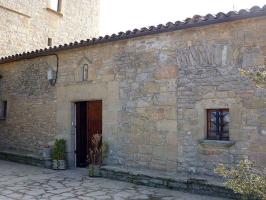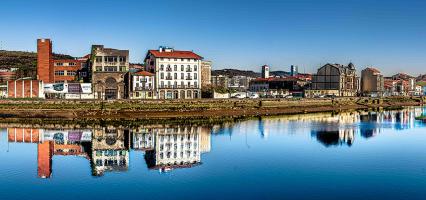Thessaloniki gets ready for its metro launch in November
The underground rapid transit lines have been under construction for almost two decades due to various project delays
 TheMayor.EU logo
TheMayor.EU logo They bring families together, keeping the spirit of Christmas alive
Sure, the coronavirus pandemic has spoiled many longstanding Christmas events around the world. But despite restrictions on social gatherings which often mean that Christmas will be celebrated within one family, there is a tradition that has been spared – the Christmas dinner table. Laden with dishes whose recipes have been handed down from mother to daughter over the centuries, the table laid out for the family dinner at Christmas Eve has more than meets the eye…
So, what is on the festive table? Fish is the obvious answer in sea bound countries. In Portugal, as attested by Europe’s Not Dead website, it is the traditional Bacalhau (salted cod), while Swedes prefer lutefisk - dried ling or cod soaked in water and lye before it is cooked, and Lithuanians have no fewer than three herring dishes on the table. The Czech have no access to sea, but their rivers are teeming with fish, so seeing fried carp at the top of their Christmas menu is no surprise.
Meat rules in France, famed for delicacies such as foie gras and chapon, Austria which sticks to its traditional Bratwurst (roast sausage) with sauercraut, Denmark where roast pork is the focus and Ireland where no Christmas table can do without ham and roast goose. The list is long...
In Italy, the homeland of pasta, the first course of the Christmas dinner is a soup made with pasta boiled in meat or capon broth. The main course varies – it is poultry in the North and fried eel in the South.
In Bulgaria, a historically rural country, the Christmas Eve menu is a strictly vegan one, made up of dishes that must be odd in number (usually three, five or more): sarmi (pickled cabbage or vine-leaf rolls) stuffed with wheat or rice, haricot beans, stuffed peppers, tikvenik(pumpkin pastry), oshaf (a compote made of dried plums and other dried fruits). All the food items produced at home are laid out, as the Christmas Eve table was believed to have a powerful magic function, ensuring that the coming year will be just as plentiful.
In the countryside, special ritual breads are made, one of which is given to the koledari, groups of boys visiting homes to wish good luck and fertility. A place is left at the table for the Holy Virgin and after dinner, the table is not cleared, as the Bulgarians believe that God will descend to it during the night.
No table can be complete without desserts and it is here that Bejgli (walnut and poppy seed roll), the traditional Hungarian Christmas cake, stands out. In the past, its two fillings had been assigned different symbolic meaning: walnut would guard against hexes, while poppy seeds, which were imported from Eurasia by Ottoman merchants, promised prosperity.
Is this enough to make your mouth water? Well, no matter where you are in Europe, your Christmas dinner will be as tasty as it ever was, rest assured.

The underground rapid transit lines have been under construction for almost two decades due to various project delays

Now you can get your wine in Talence by paying directly in Bitcoin

That’s because the state has to spend money on updating the railway infrastructure rather than subsidizing the cost of the popular pass

Rethinking renewable energy sources for the urban landscape

The examples, compiled by Beyond Fossil Fuels, can inform and inspire communities and entrepreneurs that still feel trepidation at the prospect of energy transition

Now you can get your wine in Talence by paying directly in Bitcoin

The 10th European Conference on Sustainable Cities and Towns (ESCT) sets the stage for stronger cooperation between the EU, national and local level to fast track Europe's transition to climate neutrality.

At least, that’s the promise made by the mayor of Paris, Anne Hidalgo

The underground rapid transit lines have been under construction for almost two decades due to various project delays

At least, that’s the promise made by the mayor of Paris, Anne Hidalgo

Hostal de Pinós is located in the geographical centre of the autonomous region

Despite its church-y name, the district has long been known as the hangout spot for the artsy crowds

Urban dwellers across the EU are having a say in making their surroundings friendlier to people and the environment.

Forests in the EU can help green the European construction industry and bolster a continent-wide push for architectural improvements.

Apply by 10 November and do your part for the transformation of European public spaces

An interview with the Mayor of a Polish city that seeks to reinvent itself

An interview with the newly elected ICLEI President and Mayor of Malmö

A conversation with the Mayor of Lisbon about the spirit and dimensions of innovation present in the Portuguese capital














